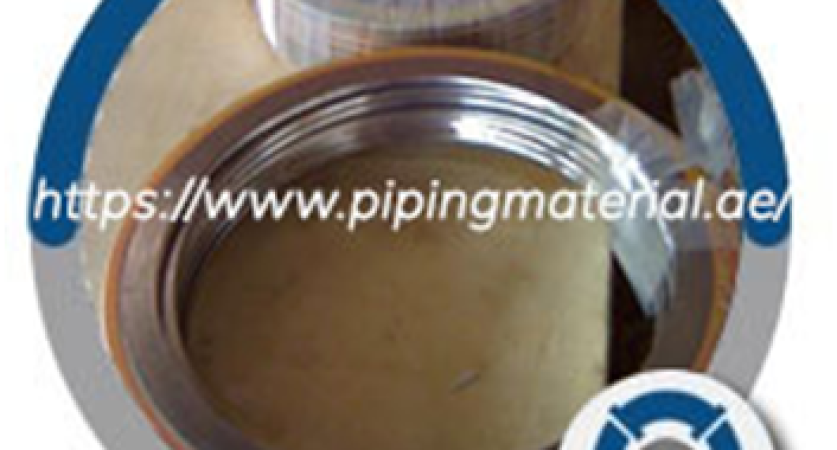What does the ASME B16.20 gasket code mean?

The American Society of Mechanical Engineers (ASME) produced the ASME B16.20 standard, which outlines the measurements and tolerances for gaskets used in pipe flanges. The standard covers both spiral-wound and ring-joint gaskets and is intended to be used in conjunction with pipe flanges and flanged fittings. It includes full-face and raised-face gaskets used in different flange connections. Full-face gaskets are used in flat-face flanges, while raised-face gaskets are used in flanges with a raised ring. The standard also includes information on the materials and performance requirements for the gaskets, as well as guidelines for their installation and use.
In general, the ASME B16.20 Gasket is designed to ensure that gaskets used in pipe flanges are consistent and perform reliably in various service conditions. The oil, gas, power generating, and chemical sectors extensively use the standard. It’s important to note that the standard is not a product standard and does not include specific test methods or procedures.
ASME B16.20 gasket
Which ASME B16.20 spiral wound gasket is the best?
Due to their superior sealability and durability, ASME B16.20 spiral-wrapped gaskets are preferred for high-pressure and high-temperature applications. Among the different spiral wound gaskets available, the best one would depend on the specific application and operating conditions. One of the most popular types of spiral wound gaskets is the Flexitallic Style CG, which is known for its excellent sealability and resistance to compression. This gasket is suitable for high-pressure and high-temperature applications and is available in various sizes and materials.
Another popular type of spiral wound gasket is the Flexitallic Style R, designed for low-pressure applications. This gasket is made from a flexible graphite filler and is known for its excellent sealability and low-emission properties. In conclusion, the best ASME B16.20 spiral wound gasket for a particular application would depend on the specific operating conditions and requirements. It is essential to consult with a gasket expert to ensure that the right gasket is selected for the job.
What is the purpose of stainless steel outlet fittings?
Stainless Steel Outlet Fittings are used to connect various types of pipe systems. They are typically used in plumbing and industrial applications requiring durability, corrosion resistance, and high-temperature tolerance. Stainless steel is an ideal material for these fittings because it is resistant to rust and other forms of corrosion, making it suitable for use in environments where water, chemicals, or other corrosive substances are present. These fittings are used to connect pipes of different sizes, including those that are made of different materials. They are also used to connect lines to other types of equipment, such as valves, pumps, and other mechanical components. These come in various sizes and forms, including reducers, tees, crosses, and elbows.
In addition to their durability and corrosion resistance, these ss fittings are easy to install and maintain. Additionally, they need little maintenance, which makes them perfect for usage in systems that are only sometimes supported.
Overall, the same is an essential component of any pipe system, providing the strength and durability needed to connect various types of pipes and equipment.
Why are ss outlet fittings called?
SS outlet fittings are called such because they are made of stainless steel. A form of steel with a minimum of 10.5% chromium content is known as stainless steel, which has a strong resistance to rust and corrosion. These fittings are utilised in various fields and settings, including industrial pipe systems, HVAC, and plumbing. They are often used as a connector between two pieces of pipe or as a transition piece between different types of pipe or tubing.
Many SS outlet fittings are available, including elbows, tees, crosses, reducers, and couplings. Each kind serves a specific function and is made to offer a tight connection without any leaks. They are also provided in various sizes and designs to fulfil the requirements of varied applications.
Overall, SS outlet fittings are an essential component in many industries and are valued for their durability and resistance to corrosion. They are often used in systems that require a high level of reliability and longevity, such as those in the food and beverage, chemical, and pharmaceutical industries.
Do I have to pay import VAT on stainless steel 316 outlet fittings in Bahrain?
You will likely have to pay import VAT on stainless steel 316 outlet fittings in Bahrain. The government levies import VAT, commonly called customs charges, on imported items. The kind of imported products and the nation of origin affect Bahrain’s import VAT rate.
For stainless steel 316 outlet fittings, the import VAT rate is likely around 5% of the value of the goods. In addition to import VAT, there may also be other taxes and fees, such as excise tax and port charges, that apply to imported goods in Bahrain.
It is important to note that import VAT is not always applicable to all types of goods, and certain exemptions and reductions may apply. For example, imported goods for use in specific industries, such as oil and gas, may be exempt from import VAT. Additionally, imported goods for re-export may also be exempt from import VAT.
How can India reduce its ASME B16.20 RTJ gasket purchases from China?
One solution for India to cut back on its purchases of ASME B16.20 RTJ gaskets from China would be to invest in domestic production and manufacturing of these gaskets. This could include the development of new technologies and equipment to increase the efficiency and quality of the domestic output, as well as the training and education of skilled workers to operate these machines. India could also focus on promoting and supporting local businesses that produce ASME B16.20 RTJ gaskets and implementing policies and incentives that encourage companies to source their materials and components locally. This could include tax breaks for companies that use domestic suppliers and government procurement policies favouring domestic producers.
Another solution could be to increase the research and development of alternative materials and technologies used to produce ASME B16.20 RTJ gaskets. This may result in creating fresh, inventive items that are more affordable, sustainable, and kind to the environment.
Finally, India could also explore the potential of forming strategic partnerships and collaborations with other countries and companies looking to reduce their dependence on Chinese imports.
- SHARES
- [shared_counts]

Ashmawi Sami has a Bachelor degree in Travel and Tourism Management from the University of Minnesota. He has his own travel vlogging channel. Besides being a fantastic yoga instructor he has travelled to 9 countries and planning his next trip soon. As the father of 3 dogs, he is well-trained in parenting, crowd control, and crisis situations.
ABOUT ME

Gillian is a freelance blogger, student, and full-time traveler. Each day she spends her time exploring something exciting to help people find the information they need while travelling to a new destination. Whether it be the place to enjoy holidays, or a spot to throw a party or hidden gems that you must visit in the city.
ALL CATEGORIES
- Adventure (13)
- Automotive (8)
- Business (697)
- Education (13)
- Event (4)
- Health (286)
- Insurance (11)
- Lifestyle (12)
- News (1)
- Real Estate (19)
- Shopping (26)
- Technology (23)
- Travel (8)

JOIN US TODAY
POPULAR POST
January 27, 2021 -
Adventure Travel For The Audacious Spirit
January 27, 2021 -
Small Business Loans for Women
January 27, 2021 -
Adventure Tours in Vanuatu
RECENT POST
June 27, 2025 -
Forvandl dit hjem med de rigtige tømrer i Herning: En omfattende guide
Når det kommer til boligrenovering, er det afgørende...
June 27, 2025 -
The Importance of Live CEUs for Respiratory Therapy Professionals
In the fast-paced and ever-evolving field of healthcare,...
June 27, 2025 -
Din Guide til et Professionelt Flyttefirma i Randers og Skive
Når du står over for en flytning, kan...
June 26, 2025 -
Unlocking the Future: Your Guide to California Tarot Reading
In the fast-paced, ever-evolving world we live in,...


.png)




















